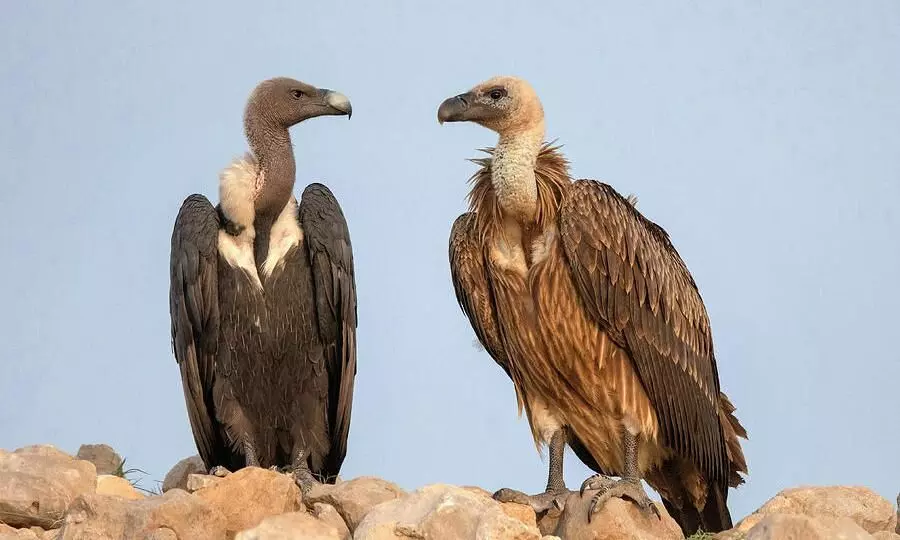
Tripura with project to breed endangered vultures
text_fieldsAgartala: Tripura forestry department is planning a project, 'vulture conservation and artificial breeding', to breed endangered vulture species in the Padmabil region of Khowai district, PTI reported.
Divisional Forest Officer (DFO) of Khowai, Niraj K Chanchal, said that the Union government had sanctioned funds for the project, which will artificially breed the bird after bringing vultures from Haryana. The offspring would be released into the wild, he added.
He further said that the vulture population has improved in the last decade as about 30-40 of them were sighted in the district, while it was almost extinct before. There have been improvements in their natural habitat, he said.
Principal Chief Conservator of Forest (PCCF), DK Sharma, said that the breeding programme would save vultures from extinction, and it could create 600 pairs of vultures, in three species, in ten years. The population will be diverse and self-propagating if the programme gets implemented.
Chanchal said that the locals had positively responded to forest departments requests to plant Shimul trees, a leafy tree in which vultures roost, and stop giving diclofenac to their livestock. Diclofenac is an anti-inflammatory drug that causes renal failure in vultures. After the depleted Shimul trees were restored vulture population improved, while they adapted to the scarcity of food too, Chanchal said.
However, the department is also planning to set up vulture colonies to ensure enough food and a suitable ecosystem.
International Union for Conservation of Nature (IUCN) had identified white-rump-ed vulture, among nine species in India, as critically endangered.
Prasenjit Biswas, an ornithologist, said that human corpses are not dumped in open as well as animals', and this caused a scarcity of food for vultures. Biswas has been studying vultures and their movements for more than a decade.
DK Sharma told PTI that Oriental White-backed Vulture and Long-billed Vulture populations went down 92 per cent from 1991 to 2000. It reached a 99.9 per cent decline for Oriental White-backed Vultures and 97 per cent for long-billed and slender-billed vultures in 2007. Vultures are listed in the Oriental White-backed Vultures, giving the highest protection the country provides for wildlife.























